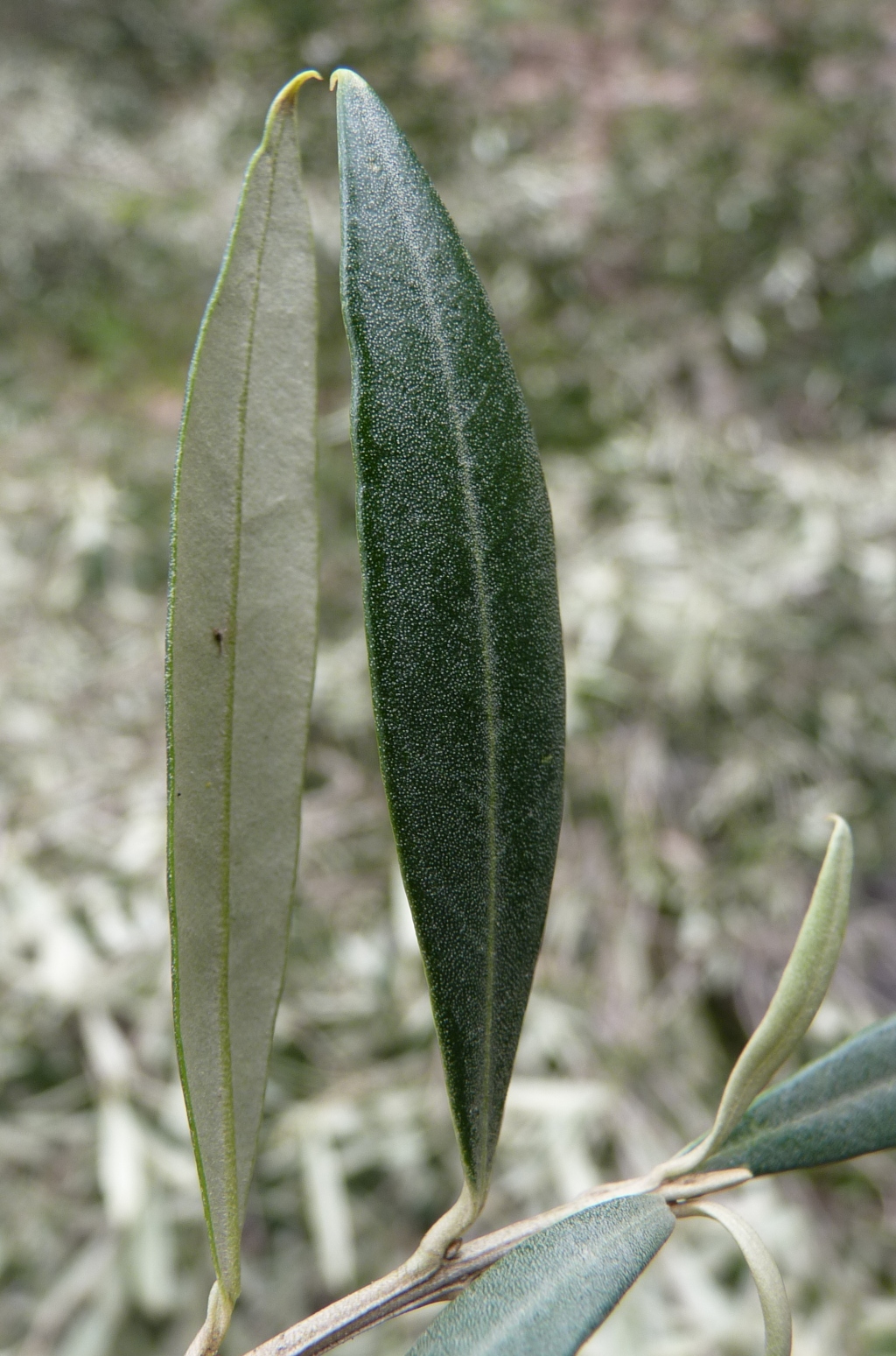Olea europaea subsp. europaea
Common OliveMuch-branched tree 2–15 m high; branches more or less glabrous, ribbed when young. Leaves narrow-oblong to elliptic, mostly 3–7 cm long and 8–10 mm wide, acute, margins entire and recurved, discolorous, grey-green and glabrous above, below with a dense covering of silver peltate scales; petiole to c. 10 mm long. Inflorescences axillary, subpaniculate, mostly 5–6 cm long; pedicels to c. 1 mm long. Calyx 1–2 mm long, with obscure triangular teeth; corolla 4–5 mm long, white or cream, tube 1–2 mm long, lobes reflexed at anthesis. Drupe c. globose to ellipsoid, 15–25 mm long, c. 6 mm wide, fleshy, purple-black, glaucous when ripe. Flowers spring and summer.
MuM, Wim, VVP, VRiv, GipP, Gold, CVU, HSF. Also naturalised WA, SA, Qld, NSW. Native to the Mediterranean region and south-west Asia. Grown for its oil-producing fruits and occasionally spontaneous in Victoria.
Subsp. cuspidata (Wall. ex G.Don) Cif, which is naturalised throughout New South Wales including near the Murray River at Tocumwal, has longer and broader leaves with a green or yellowish-brown lower surface and a prominent hook at the apex. Some naturalised Victorian material has some, but not all, of these characteristics.
Jeanes, J.A. (1999). Oleaceae. In: Walsh, N.G.; Entwisle, T.J., Flora of Victoria Vol. 4, Cornaceae to Asteraceae, pp. 477–483. Inkata Press, Melbourne.
 Spinning
Spinning


